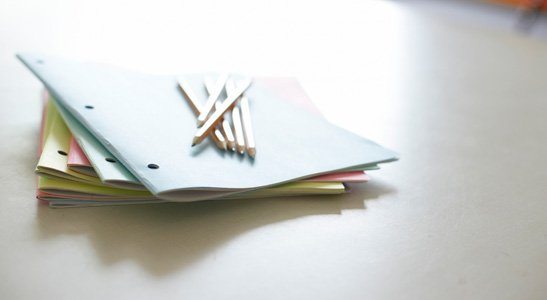Students across Arizona will explore the wonders of electricity, learn about math and science by growing plants in greenhouses built on their campuses and much more thanks to Learning Grants by SRP.
The grant program, which awarded more than $117,000 to 25 schools, provides a unique opportunity for schools and teachers to develop projects and programs that improve student performance objectives in math and science.
SRP annually contributes more than $1.3 million to education initiatives, grants and partnerships and provides free training and resources to educators throughout the state.
Educators in metropolitan Phoenix, Pinal County, Gila County, Yavapai County, Page, St. Johns and Page are invited to apply for SRP Learning Grants and SRP Social Studies grants for the 2017-18 school year at www.srpnet.com/education/grants.
The schools that will receive the SRP Learning Grants for 2016-17 are:
Weinberg Elementary (Chandler) $4,671: Third-graders will create a garden to learn how to work collaboratively to create opportunities for experiential learning. Grant funds will be used to purchase tools, equipment, and supplies to enable students to learn about plants, the technology that enhances their growing, where our food comes from, and what happens below the ground. Moving kids outside to learn, practice, measure, experiment, reflect, harvest, and eat is a perfect method to teach great STEM (science, technology, engineering and math) skills while incorporating scientific and creative writing during communication and presentation activities.
Circle Cross Ranch K-8 STEM Academy (Florence) $5,000: Circle Cross Ranch is working to create a Kindergarten through fifth-grade robotics program. The school will invest in LEGO Education Simple and Powered Machines Complete Package. This program would bridge the gap between the LEGO Education We Do 2.0 robotics program that second- and third graders are using and the VEX Robotics that middle school students are using.
Arete Preparatory Middle School (Gilbert) $5,000: Funds will be used to purchase a new Fume Hood and other science-based materials that will enable seventh- through tenth-grade students to experience hands-on chemistry. Working with some chemicals and metals is impossible without the use of this specialized equipment, and therefore, students must simply learn about these processes through a book or lecture. This will give students more hands-on activities, allowing them to experience science from a real world perspective.
Eduprize Gilbert (Gilbert) $4,980: The grant will facilitate the purchase of six computer systems meeting AutoDesk Inventor 3D modeling software specifications. EDUPRIZE will match funds to bring the total number of purchased computers to 12 as necessitated for the first year of the curriculum rollout. Students will use 3D modeling and prototyping exercises that reinforce engineering principles.
Settler’s Point Elementary (Gilbert) $5,000: The grant will be used to purchase hands-on manipulative and interactive resources that will allow students to explore their interest in math, science, and technology and develop a basic foundation that can be built upon throughout their life. These resources will help teachers provide math, science, and technology enrichment for their students that will reinforce key concepts, promote mastery learning, and improve their students’ overall test score results on the AzMERIT in science and math.
Bicentennial North Middle School (Glendale) $4,466: Funds will be used to help students develop and extend their current Environmental Club: Sustainability Performance Task from the Defined STEM curricular program. Students will use laptops to research schools that have green models, develop a brochure explaining practical sustainable options, interview an architect that specializes in re-designing schools, design a model of the school on a 3D computer program and perform other hands-on activities.
Landmark Elementary (Glendale) $2,240: The Physical Science Standard focuses on students demonstrating electricity flowing in circuits can produce light, heat, sound, and magnetic effects. Using the electrical circuit kits students will explore the effects of magnetism and learn about static and current electricity. Students will learn the role of electromagnets in the construction of electric motors and experience how electrical energy can be converted to heat, light, and motion.
Desert Edge High School (Goodyear) $3,245: Funds will be used to purchase a set of 10 graphing calculators to study and analyze data. The grant will be used to enable Algebra 1 students to complete six STEM projects over the course of a year and compete in an end of the year Inter School STEM competition. The goal is to integrate physical science concepts into the algebra curriculum that stress real world math connections. The projects include model bridge building, designing electrical circuitry, launching water rockets and constructing solar cars.
Great Hearts Trivium Preparatory High School (Goodyear) $4,978: Funds will be used to purchase sustainable scientific instruments and supplies to support the biology curriculum. The materials will allow students to conduct DNA extraction and gel electrophoresis. The DNA extraction lab will bring a complicated topic to life for the students and bring the subject down to the molecular base level.
Red Mountain High School (Mesa) $4,090: Beyond the Surface of the Earth is a hands-on project-based learning experience deeply embedding the content and processes of science, technology, engineering, and math allowing students to explore the atmosphere without ever leaving the surface of the Earth. Students develop questions about the atmosphere, determine methods for testing, collect and interpret data, and communicate results. Students will be involved in planning and executing the high altitude balloon (HAB) design, launch, recovery and data analysis.
Zaharis Elementary (Mesa) $5,000: Funds will be used to purchase science curricula that will cover electricity and flight. Students will utilize the Design Process (Ask-Imagine-Build-Evaluate-Share) to create a functional circuit and use a computer-aided design (CAD) program to create circuit stickers that will connect an LED light to a coin cell. Students will use the CAD program to fashion a circuit sticker for a Night Flyer. In addition, students will collect data to drive their decision-making through iterations of building a plane that flies the farthest possible distance.
Lake View Primary (Page) $4,763: Educators will create learning labs encompassing science, mathematics, and technology. Kindergarten classes will rotate between these areas of focus. Each lab will be created and overseen by classroom teachers with the hands-on items purchased from grant funds. The technology lab will incorporate applications in mathematics, science, and reading. The science and mathematics items will be utilized to further explore and improve problem-solving skills, while deepening student understanding.
Payson High School (Payson) $4,897: This grant proposal will add to and update the school’s science department Vernier technology inventory to meet the needs of increased enrollment. Students will collect data and organize information while developing critical thinking skills that will prepare them for a STEM-related career. The additional Lab quests and the sensors will provide students an opportunity to perform additional labs and to conduct more rigorous experiments for future courses.
Oakwood Elementary (Peoria) $4,956: The grants will be used to purchase a laptop cart, charging station and six student laptops. Students will complete units on the solar system, interactive microscope practice, Galileo research, genetic engineering and Ecomuve in which students explore either the forest or pond ecosystem in an educational video game designed at Harvard. Students learn about different species and how changes in the environment can affect these ecosystems.
Sunrise Mountain High School (Peoria) $5,000: The objective of this project is to integrate the use of Vernier LabQuest 2 standalone hand-held interface into the classroom. The interfaces will allow students the opportunity to conduct experiments as well as collect and analyze data in the same manner as real scientists. Students will engage in student-centered, inquiry-based learning using scientific instruments to conduct real-time investigations.
Arizona Collegiate High School (Phoenix) $5,000: The goal of this project is to develop the school’s science program and support innovative teaching by expanding student’s fundamental understanding of basic science through the use of technology enhanced microscopes and pH scale kits resulting in high student achievement of mastery of state-mandated competencies. Teachers will use project-based learning to show students various images on the SMART Board using the specialized microscope, and students will locate similar images on their own.
Bourgade Catholic High School (Phoenix) $5,000: This grant will fund the purchase of Vernier probes and LabQuest2 equipment as well as other sensors and lab equipment. During each unit, students work in groups conducting laboratory experiments designed to solve a real world problem. Students will analyze the data to discover one of the scientific principles or models that is the focus of the current unit.
Copper King Elementary (Phoenix) $5,000: As part of the STEAM (science, technology, engineering, art and mathematics) water academy, students will take a trip to the Salt River to complete field research. Students will spend one day rafting the river while making observations about wildlife and river ecology then a second day completing water quality tests and analyses to assess the health of the river, as well as creating river themed art projects. After the field day, students will prepare a presentation for the University of Arizona project WET program.
Fireside Elementary (Phoenix) $5,000: Kindergarten through sixth-grade students will engage in STEM through innovative, technology-minded, hands-on learning experiences as they apply understanding of Newton’s Laws of Gravity, Physics, and Simple Machines. Innovation Station is a space where young “STEMgineers” will use specific technology such as Chromebooks, 3Doodlers, Hanzbloks, and LEGOS to research, create, make, discover, investigate, and invent ways to engineer catapults and Rube Goldberg machines.
IntelliSchool High School (Phoenix) $5,000: The purpose of the “IntelliSchool Connect to Tech CTE” jobs program is to make science and math relevant through hands-on training and, upon successful completion of the program, provide industry-specific certification in telecommunications, copper cabling, and fiber optics to at-risk high school students so they can obtain skilled, high-paying jobs upon graduation. Funds will be used to purchase reusable curriculum materials that will support the hands-on technology portion of the program.
Sonoran Foothills School (Phoenix) $3,986: The purpose of this project is to promote the integration of science, technology, engineering and math. Using the Lego Mindstorm Ev3, students will learn basic programming skills and advance from being merely computer users to creators and inventors. Students will research and solve real-world problems arising in their own community and share their solutions while building an autonomous robot using engineering concepts.
St. Jerome Catholic School (Phoenix) $4,911: Science and math labs will be implemented and will include technology and hands-on resources, which will provide the opportunity to increase student’s engagement and overall understanding of science and math concepts. Funds will also be used to purchase a variety of hands-on materials, which will equip teachers with the tools to differentiate learning and provide instruction that will meet the individual needs of all students.
Queen Creek Middle School (Queen Creek) $4,882: Students will use 36 mini-tablets to access Google Maps, GPS, satellite imagery and other technology to map the trails in the San Tan Regional Park. Students will take photos along the trails and embed the photos in Google Maps to create a virtual field trip of each trail. Rocks, plants and wildlife will be noted and categorized, along with other observations, such as evidence of human interaction. Virtual scavenger hunts will be created for families visiting the park and for use by the park ranger.
Scottsdale Preparatory Academy (Scottsdale) $5,000: Funds will be used to purchase a weather station and dedicated computer hardware to collect and store climatological data. Students will connect the weather station to the GLOBE network, an intergovernmental program that allows schools to contribute to a rapidly expanding global database of environmental data. Involvement in this program will give our students hands-on experience with big data, allowing them the opportunity to analyze data from our location and around the world.
St. Johns Middle School (St. Johns) $5,000: This project will fund 20 Chromebooks for a math and science rolling STEM lab to help students write lab reports, do virtual science experiments and collaborate using Google Chrome. The school is in need of more technology to help raise achievement, and students need more access to technology to be successful in the 21st century job market.




